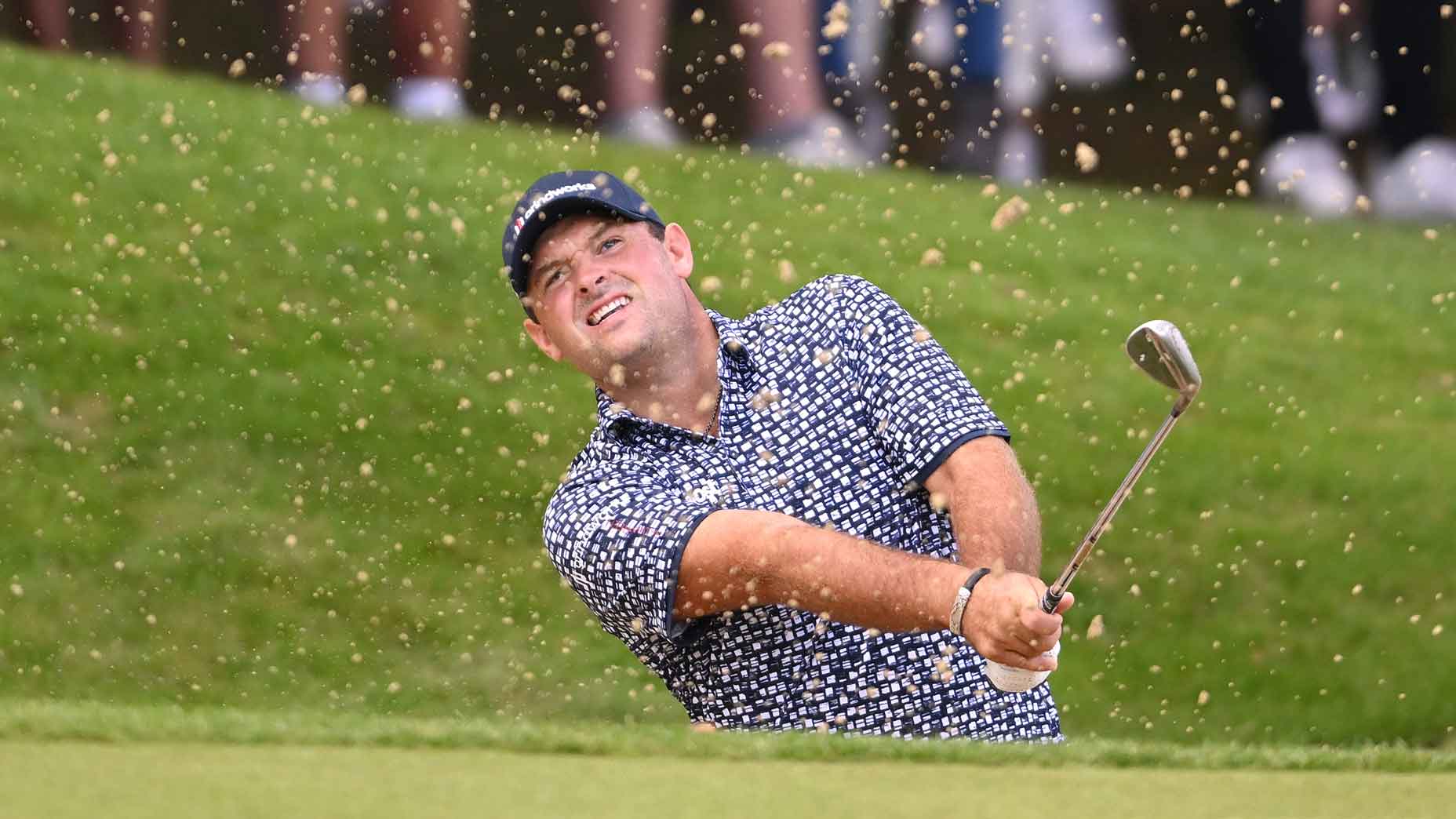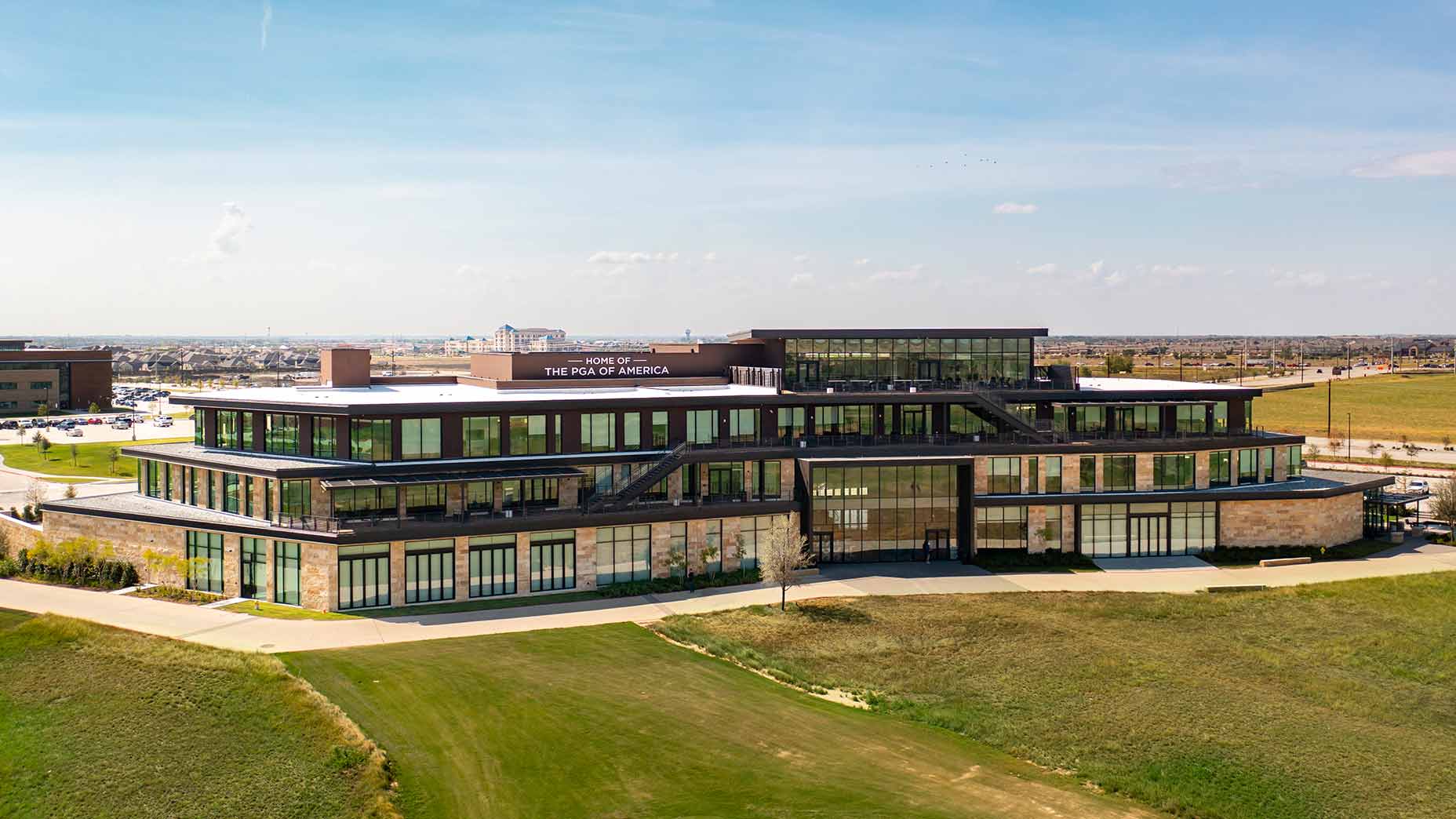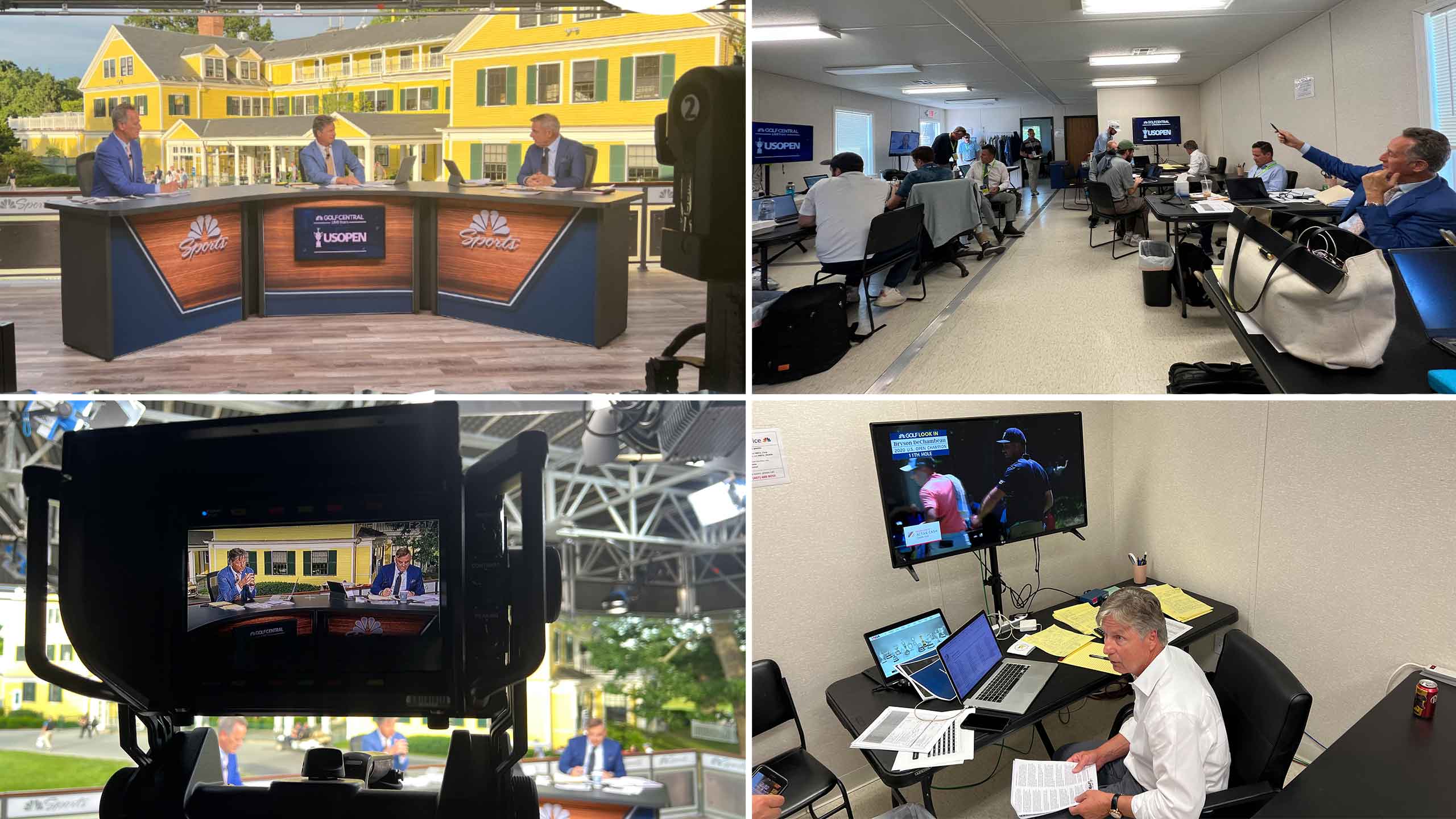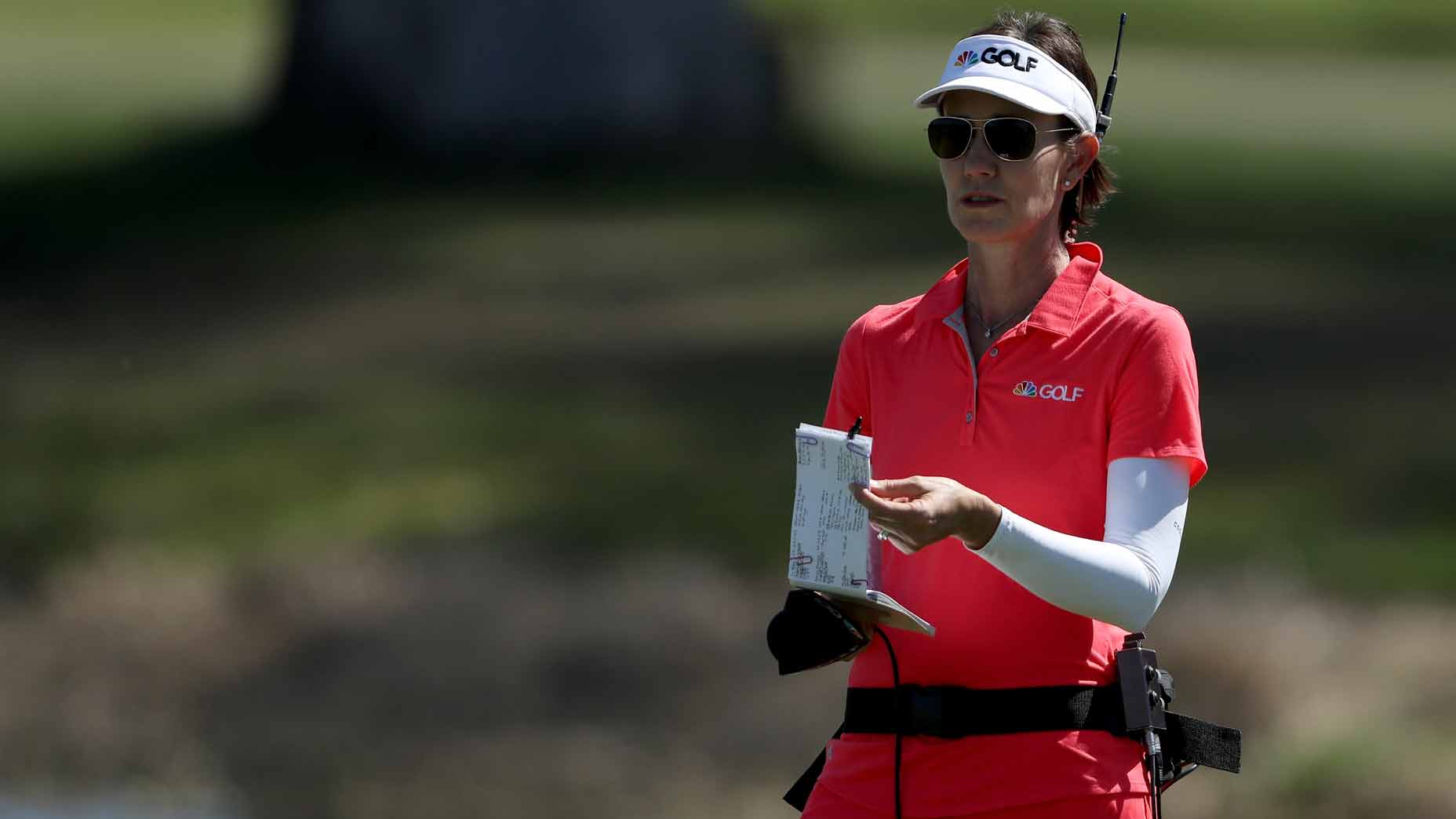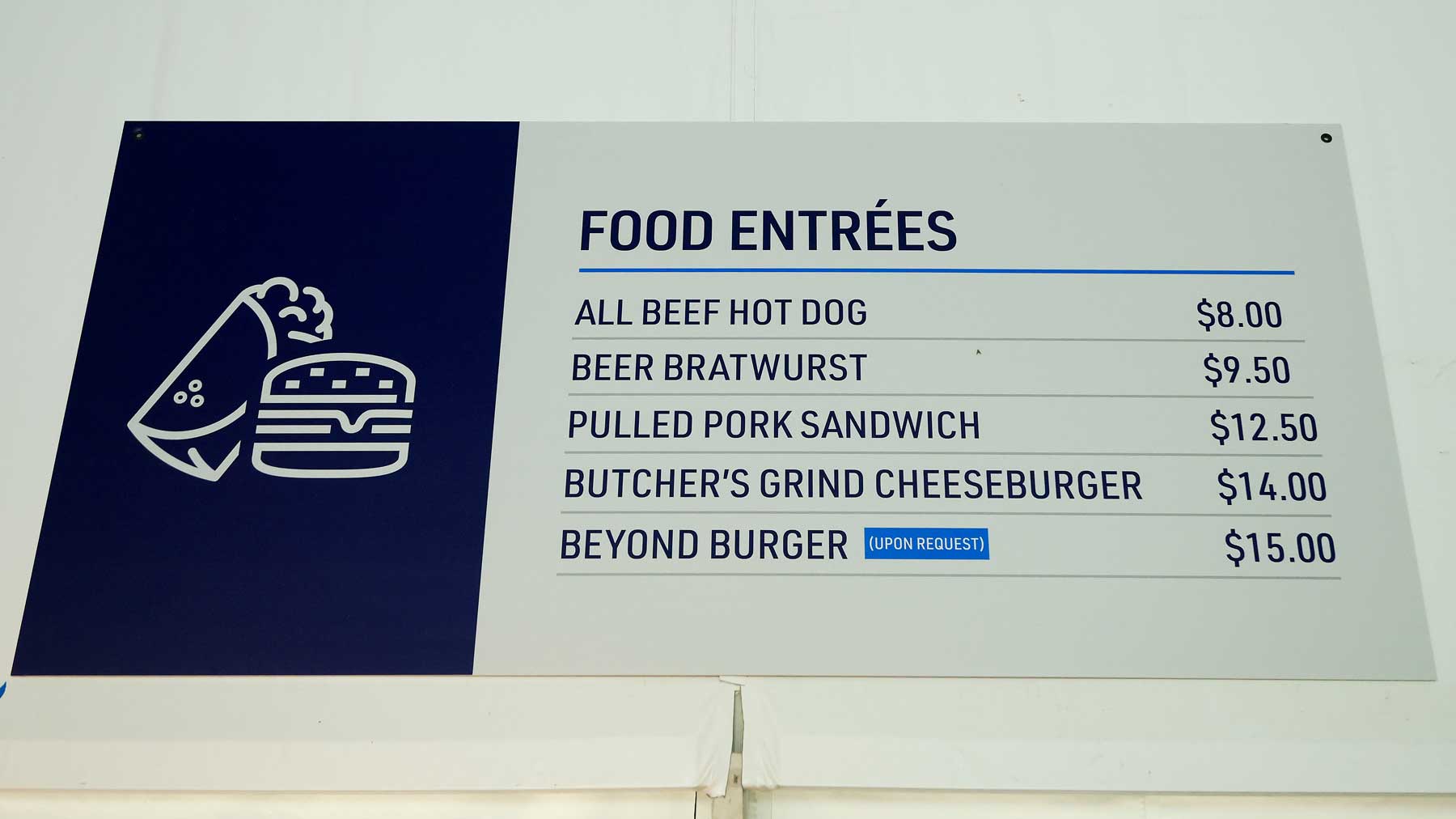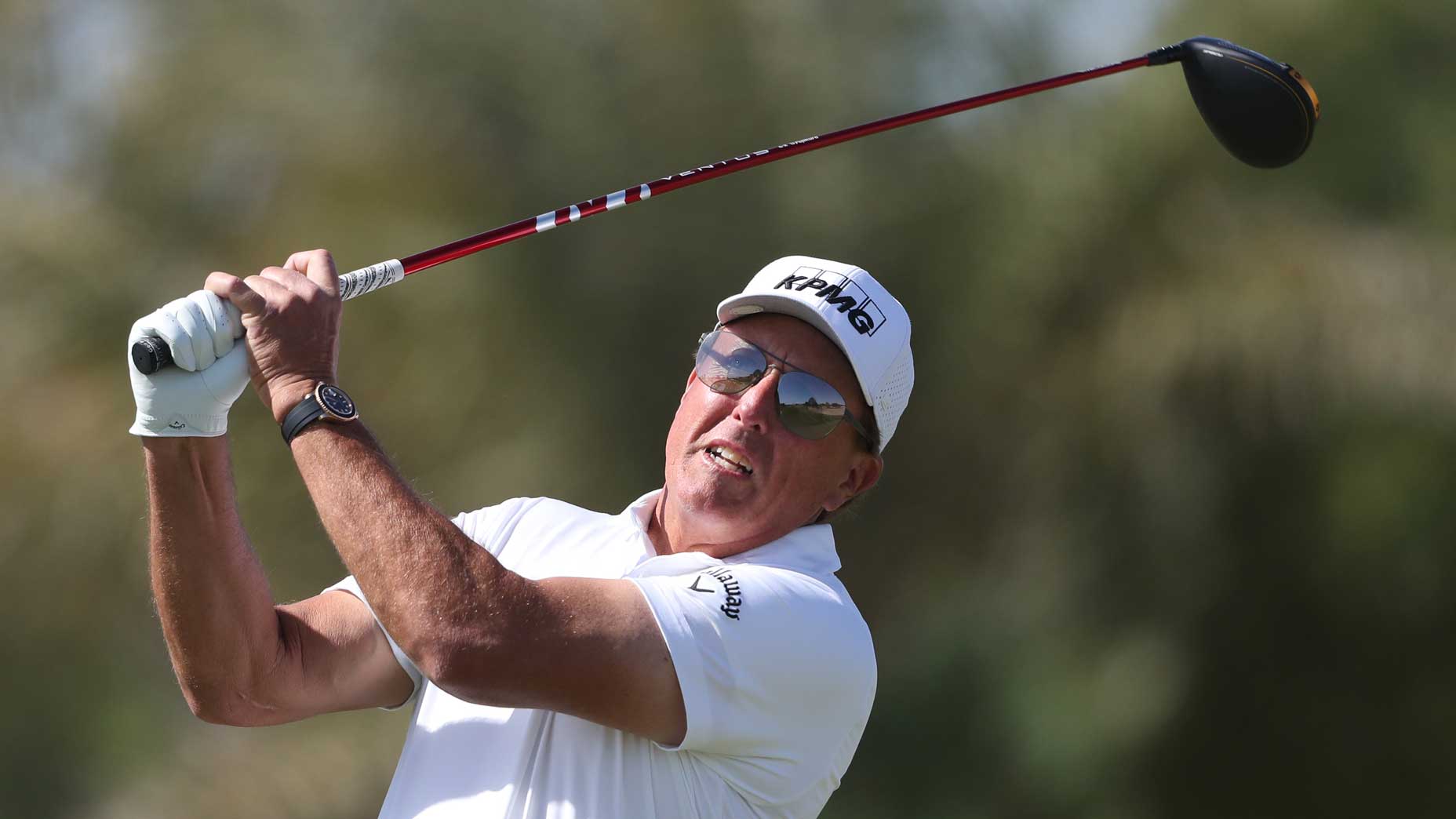As our nation has grappled with questions of racial and social injustice in recent days, so, too, has golf, at every level of the game. “We need to grow out of this, and we need to diversify those that have access to our sport,” PGA Tour commissioner Jay Monahan said last week. Monahan was speaking only for his organization, but plenty of other voices across the golf world have echoed his sentiment. When it comes to diversity, accessibility and opportunity, the game can and must do better.
But how and through what channels? What has the past taught us? And what is the best path forward? To begin exploring those questions, we convened a panel from a cross-section of the golf community, including a former PGA Tour player turned golf-course manager; a 15-handicap public-course golfer; a PGA of America staffer; a long-drive competitor and former college standout; and a Golf Channel host.
Here is their discussion, which was guided by six questions from GOLF.com. It has been lightly edited only for clarity.
How did you get introduced to the game, and what about it most appealed to you?
Adrian Stills, 62, general manager and teaching pro at Osceola Golf Course, in Pensacola, Fla., and former PGA Tour player: My father started my brother and I out playing when we were growing up in Pensacola. I was 8 and he was 14. It was the best way he could spend time on the weekends, and he knew it would keep us out of trouble. A father spending four to five hours with his boys — he and golf had our full attention.

Damon Hack, 48, co-host of Golf Channel’s Morning Drive: Golf just wasn’t a part of my upbringing. My parents didn’t play. No aunts or uncles either. If golf was on television, it was because we were waiting for a basketball game to come on. Then, while I was a sports radio intern during college at UCLA, the station director took me to the golf course one day and later gave me a set of Arnold Palmer Peerless irons. I’d heard of Palmer loosely, mostly from commercials. I shot 144 the first time out. Still, the game stuck, probably because two out of the 144 shots were decent.
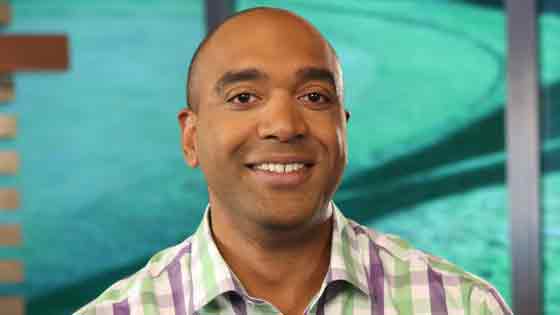
Charles Dillahunt, 25, PGA of America’s inclusion and diversity engagement coordinator: I was introduced to the game about five years ago at the age of 20 when I was looking for a sport to replace the ones I grew up competing in, both football and basketball. What appealed to me the most aside from the fact that golf is just flat out relaxing and fun, was the fact that you could play this game your whole life, and it provided a challenge. Golf is one of few sports you can insert some of the best athletes in the world into, and they look so unequipped at first. It takes focus, concentration, dedication, relaxation and many other qualities to be good at this game. All the qualities of golf translate over to real life seamlessly as well, that may be the best benefit of all.

Andrew Haynes, 36, avid 15-handicap golfer and creative director, Queens, N.Y.: I didn’t grow up with the game, I didn’t start playing until my mid-20s. I was on a business trip early in my career, and golf was a team-building activity for the company. It was a “best-ball” setup, and I smoked my very first drive down the middle — definitely beginner’s luck. From then on, I was hooked. I loved the challenge the game provided, the chance to be outdoors and the opportunity to meet new people.
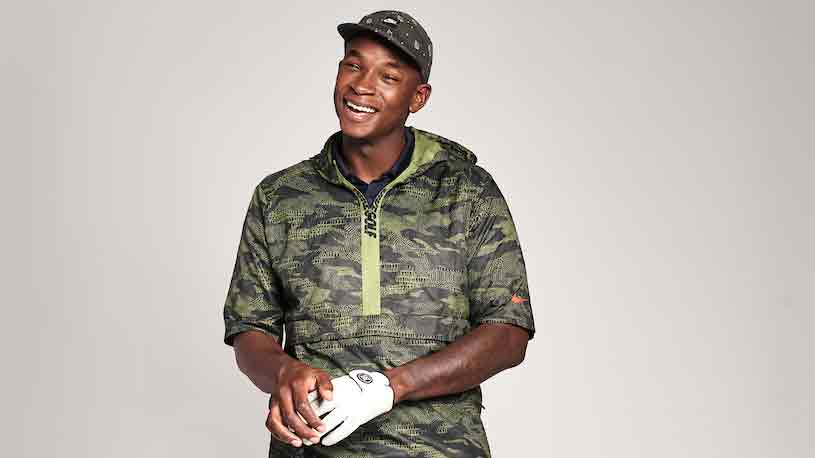
Alexis Belton, 27, World Long Drive competitor and former college golfer: My dad played when I was really young, and then he stopped playing because he got busy with life. So, I first saw golf when I was really young, but not reintroduced to the game until my sophomore year of high school by my health teacher. I fell in love with golf because it’s the ultimate competitive sport, and I was pretty certain I’d be able to get good enough to get a four-year scholarship to a D1 school. I remember telling my parents that golf was going to be my thing, and they were surprised because they had put so much time and energy into my basketball game, but they supported me regardless. Sure enough, I ended up getting that scholarship. [Ed note: Belton was an All-American at Texas Wesleyan University.]

In what ways, if any, did the color of your skin impact your indoctrination into the game? Did you encounter any barriers to entry?
Stills: In 1965, when I started playing at the same golf course where I am now the general manager, things were different. They had only started letting black people play maybe 10 years prior, but I played every day in the summer. I was the only black kid there with my brother. I made friends who are still friends today. But even with my early junior success, I was limited. I still could not play in the bigger tournaments such as the Future Masters [in Dotham, Ala.].
Belton: My dad got back into golf when I was reintroduced to it, so we basically started playing together and it was a great way to connect. There were no blatant barriers early on, I just knew I needed to carry myself a certain way. I needed to make sure I spoke correctly and talked about the right things. I also never saw anyone who looked like me on the course — that was concerning, but I loved the game so much that I just kept playing. I learned, both on my own and from my parents, that I needed to act a certain way and behave a certain way in order to fit in. I knew I needed to go above and beyond, I knew I needed to make sure my hair looked a certain way, I knew I needed to dress a certain way. I knew I always needed to be on my toes.
Hack: I hear you, Alexis. I was always very nervous when I first learned to play, both because I wasn’t very good and also because there was no one on the course who looked like me. In 1992 and ’93, Tiger Woods wasn’t a household name yet. Being on the golf course to me was just an extension of my upbringing — a minority in life and even more so on the course.
I was always very nervous when I first learned to play, because there was no one on the course who looked like me. Damon Hack
Haynes: Being a golfer in New York City is very different from the rest of the country (especially the scene at public courses). I always felt welcome on every track in the area — there’s usually a diverse mix of people from various ethnic backgrounds. It wasn’t until I got invited to private clubs that I saw how different golf looked everywhere else. It’s not that people were not welcoming, you just get the feeling that every eye in is on you for the entire day. As a person of color, it’s something that I’ve had to learn to get used to in just about every area of my life. My not-so-great encounters on the course haven’t been with white golfers assuming I’m not a golfer, but a worker or groundskeeper. One time at PGA National an older man playing in front of me tried to order lunch from me as I approached the green. Another tried to return his cart to me at the clubhouse. The assumption that it was more likely that I worked there instead of playing there is unsettling.
Dillahunt: I would call myself a member of the new generation of diverse golf industry talents, one whose experience we hope everyone can have one day in the near future. I am one of few individuals of color who never experienced any barriers to entry into golf, be it in playing the game or working in the workforce. But I now realize how lucky I am to have not experienced those barriers based on stories from my peers. From many conversations with minority PGA professionals to speaking with minority golf industry workforce members, I realize that I was in a blessed position to start playing golf in a very open and accepting community where I’m from in Terre Haute, Ind. I am also fortunate to have the same inclusive experience while working at the PGA of America.
What, if anything, do you suspect white golfers might not fully understand or appreciate about how your experience in the game might have differed from theirs?
Stills: As I was coming up in the game, Osceola Golf Course had no driving range or head pro for lessons. But I did hit a lot of my own practice balls. I read where Jack Nicklaus hit 1,000 balls a day so I would try to hit my shag bag of 50 balls 10 times, and also chip and putt. When I was 14, the GM of Osceola started letting me put the carts up so I could play as much as I wanted. Golf sometimes helps in forming relationships and in breaking down barriers.
Haynes: I think the biggest things to understand happen off the course. We all have different life experiences, different levels of opportunity, different levels of resources available to us. I was lucky enough to have some really awesome friends and colleagues who helped me get started. For me, it’s about people having a higher sense of awareness, empathy and acceptance for others, no matter who they are or where they come from. If golf is something we both love, then you’re someone that I consider a friend. If everyone does that, the game will be better for it.
If golf is something we both love, then you’re someone that I consider a friend. If everyone does that, the game will be better for it. Andrew Haynes
Dillahunt: They may not understand how certain groups of golfers have to know more about how to move around and or interact in golf spaces in ways they don’t have to based on their skin color. A black golfer may not ask to play through because they don’t want to be the impatient minority or make a white group of golfers uncomfortable. Whereas a white male may have no fear in asking because they’ve never had to worry about being the impatient minority. Standpoint theory relates directly to this. The theory is an argument that people from an oppressed class have special access to knowledge that is not available to those from a privileged class and vice versa. Golfers could learn a lot from listening to those in classes other than their own.
Belton: Charles, you really hit the nail on the head. I don’t think white golfers understand what it’s like to be uncomfortable. Women in the golf world have a little more experience with that. So, as a black woman in the golf world, knowing how to be uncomfortable and how to deal with that is a required skill. There’s a privilege that comes with being white, especially in the golf world. If there’s one thing I could tell the golf community, it’s just to try to understand what it feels like to have to prove your worth instead of walking into a space and already having it.
Hack: I think you guys are on to something. As I sit here, I can’t ever recall asking the group in front to let me play through. I either wait for a playing partner, who is most often white, to do it or I just hope the group in front waves us through. How crazy is that? I’ve never even thought of that until this moment. When you are a 6-foot-3 black man in a white world, you make accommodations consciously and unconsciously. You learn not to make a scene. Keep the temperature down.
As a black woman in the golf world, knowing how to be uncomfortable and how to deal with that is a required skill. Alexis Belton
Black golfers represent only 5 percent of the U.S. golfing population, according to the latest figures from the National Golf Foundation. Access and cost are often cited as the biggest reasons why there aren’t more black golfers. How, in your mind, could the game at large do a better job of attracting more black players?
Stills: Giving our kids the opportunity to play courses at a reduced rate is key. My dad wanted us to play and we wanted to do what he did. I don’t think he knew that this game would put both my brother and I through college. [Ed note: Stills was a four-time NAIA All-American at South Carolina State.] I also don’t think he knew that the game would somehow develop us into the men we are now. (Very much like the person he was, we have been told). But you know, he might have known.
Dillahunt: Making the historically unengaged black community more aware of all the benefits golf can offer them on and off the course is where we should start. Last year, we partnered with Black Enterprise and Jopwell to ensure we were researching and advertising to the communities that are unengaged in golf, so that they could learn what they simply may not know golf can offer them based on lack of access. It also provided us the much-needed knowledge of how to welcome and engage those communities in effective ways as well. When more black individuals are aware of opportunities available, making sure they are welcomed and provided the resources needed, financially or otherwise (human capital, mentoring, etc.) will be key. We can invite anyone we want to the game, but if when they get there, we aren’t prepared to walk with them along their golf journey, the retention rate will not be where we need it to be.
Making the historically unengaged black community more aware of all the benefits golf can offer them is where we should start. Charles Dillahunt
Belton: It starts with larger organizations creating divisions within themselves that specifically reach out to people of color. There’s a young lady on the Symetra Tour this year [Gabby Lemieux] who’s the first Native American female professional golfer, and that does so much for that entire community. So, it really starts from the top. Creating those spaces is huge, because helping us feel comfortable is half the battle. Establishing that level of comfort also comes from your peers.
It’s been interesting to watch NBA players and professional tennis and soccer players take an initiative to change the history of their sport. I’m already starting to see golfers take that action. Even something so small as Brooks Koepka’s Instagram post and the way he responded to some of his comments — his responses made me feel like if I was ever in his presence I would feel safe. The black community is not looking for sympathy. We’re looking for empathy, because empathy is what can turn into action. Life’s hard in general, and we’re just asking for help.
Hack: I think outreach is important in exposing black children and families to the game. The tough part is making those connections long lasting. As much as Tiger Woods has impacted the game, some tough truths remain. Golf is expensive. The wealth gap between rich and poor continues to widen. And with black median household income continuing to lag behind other ethnic groups, it’s just harder to sustain those connections. Golf means so much to all of us here. I am excited every time I go play. I mean, every time. But to many it remains an intimidating, pricey, hard-to-grasp leisure sport. The game’s gatekeepers and governing bodies must continue to work on these issues, and I believe, in light of the past couple weeks in our country, many are redoubling their efforts to do so.
Tony Finau shares his experience with police brutality, racismBy: Rachel Bleier
Haynes: The first thing that needs to happen is exposure. More minorities need to learn the game and know that they are welcome. That’s where it starts. The cost of golf is also a barrier. I think that the best way to reduce this barrier would be for the entire industry to work together so everyone helps carry the load. Equipment makers should donate equipment on a yearly basis to clubs. Courses can allocate days/hours for free tee times for children. Ranges can do the same. Golfers are also some of the most generous people I’ve ever met. My first set of clubs was a set a friend gave me. Over the years I’ve tried to repay his generosity by giving equipment I didn’t use to those who need it. If there’s a kid out there that needs a club or two, I’ve got a few around the house I’d be happy to send their way. Just DM me on Instagram. I’m not kidding.
On the flip side, what existing programs or strategies do you think have been most effective for getting more young black golfers engaged in the game?
Stills: The First Tee has done some great things. I was the first executive director of our chapter here in Pensacola. To this day, kids in our area can play most of our courses for only $5. In Orlando, Dr. Tom Dorsey started the Orlando Minority Youth Golf Association. He had done an unbelievable job there. To date, his program has put 30 kids into college.
The First Tee has done some great things. To this day, kids in our area can play most of our courses for only $5. Adrian Stills
Dillahunt: PGA Works is one I would name off the top of my head. It’s an initiative funded by the PGA of America’s foundation, PGA Reach. Through fellowships, scholarships, career exploration events and the most culturally significant championship in collegiate golf, the PGA Works Collegiate Championship, it provides opportunities for young professionals to enter into golf’s workforce seamlessly. Alexis Belton, who is on this panel, actually won the event in 2013. A strategy we use when showcasing the talent in PGA Works is to place the talent throughout our social media not by stating their ethnicity upfront, but by stating who they are and what they’ve done to deserve the position they are in. That way, you see who and what they are, past just their skin color. We also strategically aim to make it one of the most visually diverse golf social media channels you can find, so prospective talent can see someone who looks like them working in the industry.
PGA VendorMatch is another program I would mention. It provides Tier 2 diverse-owned businesses the opportunity to interview for sourcing opportunities with Tier 1 suppliers at the PGA Championship and Ryder Cup events with the PGA of America. When suppliers have a positive experience in the business of golf and benefit from golf’s economy, they are more likely to participate in the game. We have many success stories from the black business community, namely Darrell Searcy of Chandler, Campbell & Daschle, as well as Dave Cook of Americana Foods.
Belton: This is a tough one. I’ve been part of a few First Tee programs and Atlanta’s First Tee program stands out. And the Drew Charter School, which is super close to East Lake, offers golf as an extracurricular class, which is huge, because that introduces kids to golf at a very young age. And since the program is tied to East Lake, these kids get to experience the game in a way that few minorities ever do. I believe the first African-American boys team to win the state championship in Georgia also came from that program; it just seems really neat. “Golf With A Purpose” is East Lake’s tagline, and they really live up to it.
Hack: I, too, have been impressed with the Drew Charter School, which has helped change the fortunes of so many in the East Lake neighborhood. The young people on their way to college are ready to take on not just golf but also the world. I’ve seen up close the good work of The First Tee and met so many tireless workers there and bright, inspired children. In Orlando, I’ve been impressed with Tee-Lo Golf, which has used golf to provide a safe space for local youth from underserved communities for more than 20 years.
Haynes: The Bridge Golf Foundation, in Harlem, is an organization that is really helping grow the game for minorities. I respect their balanced approach to teaching golf as well as life skills, which helps prepare kids for college and beyond. Their after-school programs cover golf, tutoring, mentoring and more. I’m also very into what Topgolf is doing for the game — it’s making golf into a fun activity that people can experience in a different way.
PGA Tour observes moment of silence to honor work to end racial injusticeBy: Nick Piastowski
Golf clearly has a long way to go, but what is your biggest hope for the game over the next decade?
Stills: I hope that this game continues to grow and opens up to more players of all ages, races and genders. It’s a lifetime sport and one of the best networking tools and relationship-building activities I know of. In this day and age, with the pandemic and racial tension and injustices, it could be great if all of us could grow. You can get to know a person pretty well when you play a round of golf with them. It builds and brings out character, and it’s the only game in which players police themselves. Integrity — one of the nine core values of The First Tee — is a trait we so need today.
Dillahunt: My biggest hope for the golf industry is that it one day grows to be more representative of the population of the world, and that it openly welcomes and serves members of all communities and from all walks of life equally and inclusively.
Belton: I just spoke with a couple of young kids the other day; they’re in seventh and eighth grade. One of the girls asked me, “Does the color of your skin affect your success in golf?” I hesitated, then decided I needed to be honest with her and I said yes. I also mentioned the people who came before me who made it possible for me to play, like Renee Powell, and I also told her that it is my personal quest to help make golf feel safe and accessible for girls like her. My biggest hope is that the answer to that question in 10 years is “no.” I know it’ll require drive and patience and willingness, but the color of anyone’s skin should not at all affect their experience with golf.
Haynes: Not everyone is going to fall in love with golf the way that I did, and that’s OK. My one hope is that in 10 years everyone will have the equal opportunity to make that choice for themselves. Cost and race are barriers that we can overcome together.
Hack: In 10 years, I hope golf has taken some chances and been bold in its efforts to diversify the game on the course, in the media, and among its powerbrokers. It will take vision, optimism and some outside-the-box thinking to make the game more representative of the world. And at a time when people seem willing to listen, learn and share ideas, I remain hopeful that golf’s inherent mystery, challenge and beauty can be enjoyed by all.




